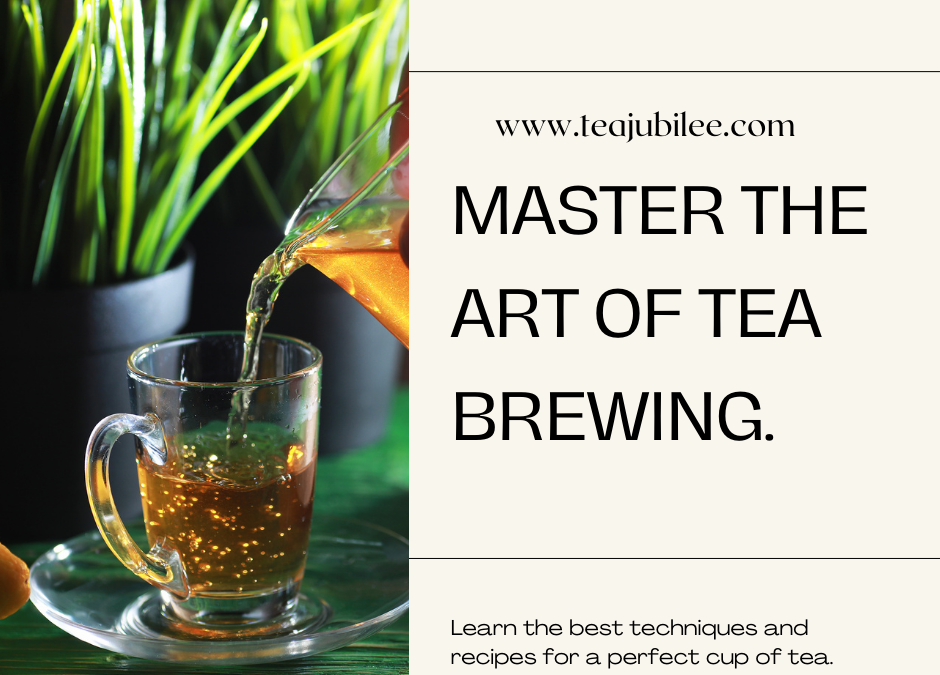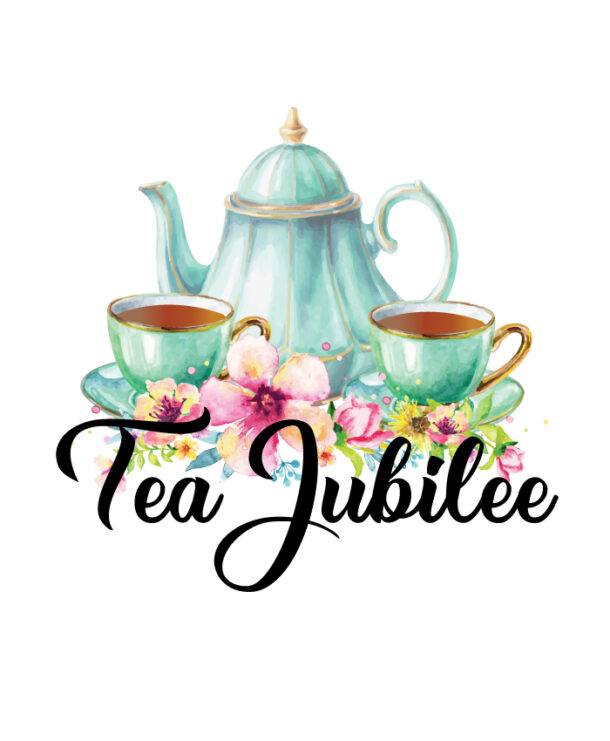==================
A Caveat and Affiliates
First off, a little caveat: within my articles you will find affiliate links, meaning if you buy them, I get a small commission. Your cost is not affected. In addition, I am an Amazon Associate and I earn from qualifying purchases on Amazon.
And yes, if I say that I recommend a product here, it means I truly believe it is a good product. I refuse to recommend any product that I have not researched and believe to be a good value.
Even better, I provide you with a very clear picture of the product, it’s use, and the probable value.
Earning your trust is important to me. I run this website myself and the commissions and donations help support the site.
Sound reasonable and fair enough? Let’s continue to the article.
==================
Contents
Master the Art of Tea Brewing: A Comprehensive Beginner Guide
Hello, and welcome to our guide on how to Master the Art of Tea Brewing. So keep reading this article to find out all about how to master the art of tea brewing. Enjoy!
Tea is not just a beverage; it’s an art. The process of brewing tea involves precision, patience, and a deep understanding of the different types of tea and their unique brewing requirements.
Whether you’re a tea enthusiast looking to enhance your brewing skills or a beginner eager to explore the world of tea, this comprehensive guide will take you on a journey to master the art of tea brewing.
Introduction to Tea Brewing
Tea brewing is the method of extracting flavors and aromas from tea leaves, resulting in a delicious and refreshing beverage. For centuries, tea has been a staple in various cultures around the world, known for its health benefits and soothing properties. Brewing your own tea allows you to tailor the taste and experience to your preferences, making each cup a personalized delight.
Benefits of Brewing Your Own Tea
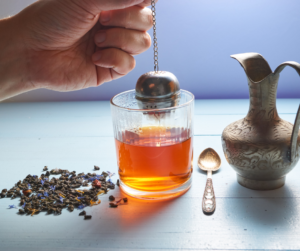
Brewing your own tea offers numerous benefits beyond the enjoyment of a warm cup. Firstly, it grants you full control over the quality of your tea.
By selecting high-quality tea leaves and using proper brewing techniques, you can ensure that you are consuming the best possible tea. Additionally, brewing your own tea allows you to experiment with different flavors, blends, and additives, creating a customized experience that suits your taste buds.
Moreover, brewing your own tea can be a therapeutic and relaxing activity. The process of carefully measuring tea leaves, selecting the right temperature, and patiently waiting for the tea to steep can be a meditative experience that helps you unwind and find tranquility in the midst of a busy day. Plus, the aroma of freshly brewed tea can instantly uplift your mood and create a sense of well-being.
Types of Tea and Their Brewing Requirements
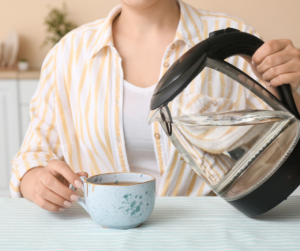
Before diving into the world of tea brewing, it’s essential to understand the different types of tea and their unique brewing requirements. The most common types of tea include black, green, white, oolong, and herbal tea. Each type has its own characteristics and flavors and requires specific brewing techniques to bring out its best qualities.
Black tea, known for its robust flavor, is typically brewed at a higher temperature, around 95°C (203°F), for 3-5 minutes. On the other hand, green tea, which has a delicate taste, requires a lower temperature of around 75-80°C (167-176°F) and a shorter brewing time of 2-3 minutes.
White tea, often prized for its subtle and sweet flavors, is best brewed at a temperature between 80-85°C (176-185°F) for 4-5 minutes.
With its complex and varying flavors, Oolong tea benefits from a temperature range of 85-90°C (185-194°F) and a brewing time of 3-4 minutes.
Lastly, herbal teas, which are made from various plants and herbs, have different brewing requirements depending on the specific ingredients used.
Tea Brewing Equipment and Tools

You’ll need the right equipment and tools to embark on your tea brewing journey. Here are some essentials:
-
Teapot: A teapot allows for proper infusion and easy pouring. Choose a teapot that suits your needs and aesthetic preferences. Consider factors such as material, size, and design.
-
Tea Infuser or Strainer: If you prefer loose-leaf tea, a tea infuser or strainer is necessary to prevent leaves from floating in your cup. Opt for a high-quality infuser that allows the tea leaves to expand fully.
-
Kettle or Electric Tea Maker: A kettle or electric tea maker with temperature control is vital to achieve the ideal water temperature for brewing different types of tea. Look for a kettle that offers precise temperature settings.
-
Tea Timer: A tea timer helps you keep track of the brewing time, ensuring that your tea is not overstepped or understeered. You can use a traditional kitchen timer or a smartphone app dedicated to tea brewing.
-
Tea Cups or Mugs: Enjoy your brewed tea in beautiful tea cups or mugs that enhance the sensory experience. Choose cups with good insulation to keep your tea hot for longer.
Selecting the Right Tea Leaves
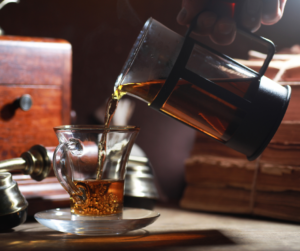
The quality of your tea leaves plays a crucial role in your brewed tea’s final taste and aroma. Opt for loose-leaf tea over tea bags when selecting tea leaves. Loose-leaf tea offers better quality, flavor, and a more authentic tea experience. Look for tea leaves that are whole, intact, and have been sourced from reputable tea estates.
Consider the origin and processing methods of the tea leaves. Different regions produce teas with distinct characteristics, so explore teas from various origins to discover your preferences. Additionally, pay attention to the processing methods, such as oxidation levels for black and oolong teas or steaming for green teas, as they greatly influence the flavor profiles.
Understanding Tea Brewing Temperatures
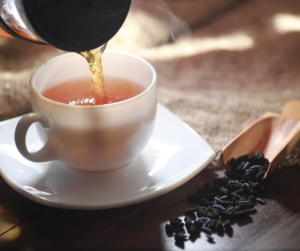
The temperature at which you brew your tea greatly impacts its taste and aroma. Each type of tea requires a specific water temperature to extract the desired flavors without causing bitterness or overpowering the delicate notes. Here’s a general guide for tea brewing temperatures:
-
Black Tea: 95°C (203°F) – Boiling water
-
Green Tea: 75-80°C (167-176°F)
-
White Tea: 80-85°C (176-185°F)
-
Oolong Tea: 85-90°C (185-194°F)
-
Herbal Tea: Varies depending on the ingredients used
Using water that is too hot can result in a bitter and astringent taste, while water that is too cold may not release the full flavor potential. Investing in a kettle with temperature control or a thermometer can help you consistently achieve the perfect brewing temperature.
Step-by-Step Guide to Brewing Tea

Now that you have the necessary knowledge and tools let’s dive into the step-by-step process of brewing tea:
-
Boil the Water: Bring the water to the appropriate temperature depending on the tea you’re brewing. Boil fresh, filtered water to ensure a clean and pure taste.
-
Preheat the Teapot: Pour a small amount of hot water into the teapot to preheat it. This helps maintain the tea’s temperature during brewing.
-
Measure the Tea Leaves: Use the recommended amount of tea leaves based on the type of tea and your personal preference. A general guideline is 1 teaspoon of tea leaves per 8 ounces of water.
-
Add the Tea Leaves: Place the measured tea leaves into the teapot or tea infuser. If using a teapot, pour the hot water over the leaves. If using a tea infuser, place the infuser in the teapot and then pour the water.
-
Steep the Tea: Close the teapot or infuser and let the tea steep for the recommended time. This can vary depending on the type of tea and your desired strength. Refer to the packaging or use the general guidelines mentioned earlier.
-
Pour and Serve: Once the tea has steeped, pour it into your tea cups or mugs. If you’re using a teapot, pour the tea through a strainer to catch any loose leaves. Serve and enjoy!
Adjusting Brewing Time for Different Tea Types
While the recommended brewing times mentioned in the previous section provide a good starting point, you can adjust the brewing time to suit your taste preferences. You can increase the brewing time by a minute or two if you prefer a stronger tea. Conversely, you can reduce the brewing time slightly if you prefer a milder tea. Experimentation is key to finding your perfect cup of tea.
Keep in mind that certain teas, such as green tea, can become bitter if overstepped. It’s better to err on the side of caution and gradually increase the brewing time until you find the balance that suits your taste buds.
Enhancing the Flavor of Tea with Additives
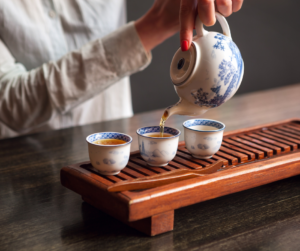
While tea is delightful on its own, you can enhance its flavor and create unique blends by adding certain additives. Here are a few popular options:
-
Sweeteners: Common sweeteners like honey, sugar, or stevia can enhance the sweetness of your tea. Add them sparingly and adjust to taste.
-
Citrus Fruits: A squeeze of lemon, lime, or orange can add a refreshing twist to your tea. Citrus fruits complement black, green, and herbal teas exceptionally well.
-
Herbs and Spices: Experiment with herbs and spices like mint leaves, ginger, cinnamon, or lavender to infuse your tea with new flavors and aromas. These additions work wonders with black, green, and herbal teas.
-
Milk or Alternative Milk: Milk can add creaminess and richness to certain teas, such as black tea or chai. Try almond, coconut, or oat milk if you prefer dairy-free options.
Remember, the goal is to enhance the tea’s existing flavors, not overpower them. Start with small amounts of additives and gradually adjust to achieve the desired taste.
Common Mistakes to Avoid in Tea Brewing
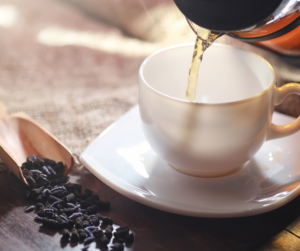
Even the most seasoned tea brewers can make mistakes. Here are some common pitfalls to avoid:
-
Using Water, That’s Too Hot: Boiling water can scorch delicate teas and taste bitter. Be mindful of the recommended brewing temperatures.
-
Oversteeping: Leaving tea leaves in hot water for too long can lead to a bitter and astringent brew. Follow the recommended brewing times and adjust based on your preference.
-
Using Poor-Quality Tea Leaves: Low-quality tea leaves can negatively impact the taste and aroma of your brewed tea. Invest in high-quality loose-leaf tea for the best results.
-
Not Preheating the Teapot: Neglecting to preheat the teapot can result in a significant loss of heat during brewing, affecting the overall temperature of the tea.
-
Storing Tea Improperly: Tea should be stored in airtight containers away from heat, light, and strong odors. Improper storage can lead to loss of flavor and freshness.
By avoiding these common mistakes, you can ensure that each cup of tea you brew is a delightful experience.
Exploring Advanced Tea Brewing Techniques
Once you have mastered the basics of tea brewing, you may want to explore advanced techniques to elevate your tea experience further. Here are a few techniques to consider:
-
Gongfu Cha: This traditional Chinese tea ceremony focuses on brewing tea in small, concentrated amounts using a gaiwan or small teapot. It allows for multiple infusions and highlights the nuanced flavors of the tea.
-
Cold Brewing: Cold brewing involves steeping tea leaves in cold or room-temperature water for an extended period. It results in a smooth and refreshing tea with reduced bitterness.
-
Matcha Preparation: Matcha, a powdered form of green tea, requires a specialized bamboo whisk preparation method. This technique creates a frothy and vibrant cup of tea.
-
Tea Blending: Get creative and blend different types of teas or add herbs, spices, or flowers to create unique tea blends tailored to your taste.
Remember, these advanced techniques require additional skills, equipment, and knowledge, so take your time to explore them at your own pace.
Conclusion and Final Tips for Mastering Tea Brewing
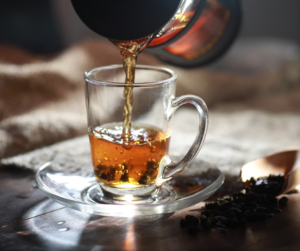
Congratulations, you have now embarked on a journey to master the art of tea brewing! You can create a truly exceptional cup of tea by understanding the different types of tea, selecting the right equipment, and following proper brewing techniques. Remember to experiment, adjust, and personalize your brewing process to suit your taste preferences.
As a final tip, always take a moment to appreciate each cup of tea’s aroma, flavors, and tranquility. Share this experience with loved ones, and continue to explore and learn about the fascinating world of tea brewing. Cheers to your tea brewing mastery!
Start your tea brewing journey today and experience the art of tea firsthand. Select a high-quality tea blend, gather your brewing tools, and let the journey begin. Happy brewing!
More From Tea Jubilee.
Tea Rituals from Around the World
The Power of Tea for Beautiful Skin
How to brew tea perfectly every time.
How to Make Tea Without Tea Bags
How to Make Tea with a French Press
And that’s all for today; thank you very much for reading our guide on how to Master the Art of Tea Brewing. We hope you’ll check out the articles from us above and read those as well. We love hearing from our readers, too. Comment below on what you think of this post.
Have a great day!


